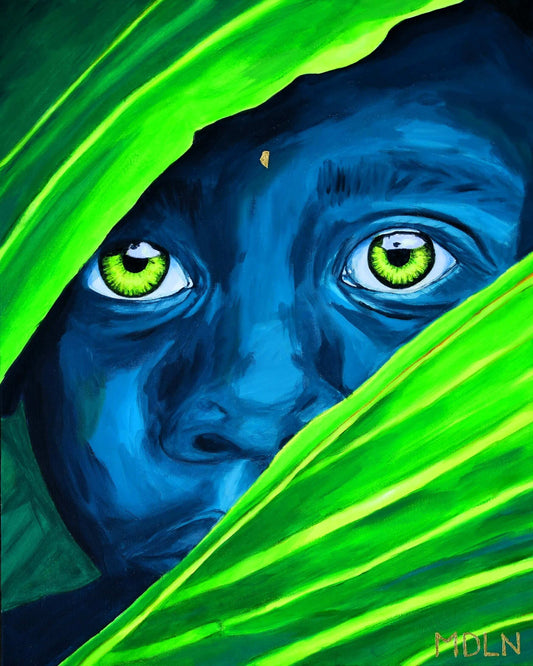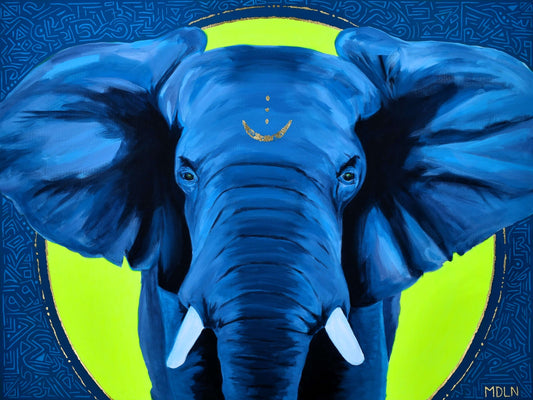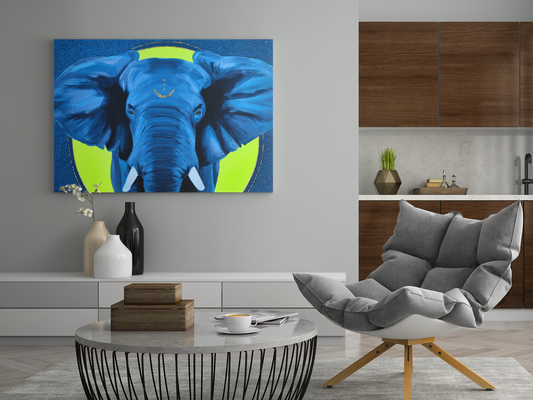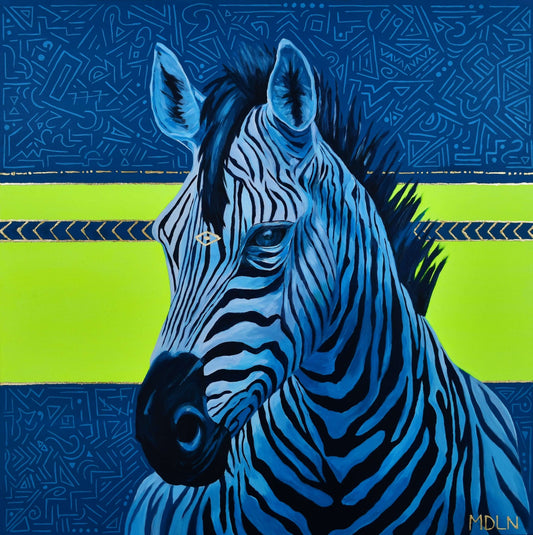The 'Majestic Beauty of the Wild: Exploring Elephant Art Across Cultures' delves into the profound emotional depth and cultural significance of elephants. From their complex emotional intelligence to their storied presence in human art and mythology, elephants have captivated the human imagination for millennia. This article unpacks the emotional lives of these gentle giants and showcases their influence on human societies through various forms of artistic expression.
Key Takeaways
- Elephants exhibit a high level of emotional awareness, including the ability to mourn, remember individuals, and display self-awareness, reflecting a complex emotional landscape.
- Artistic representations of elephants have evolved over time, from prehistoric cave paintings to modern canvases, highlighting their enduring influence on human culture and mythology.
- The challenges faced by elephants, such as a baby elephant's survival without a trunk or the intense battles for dominance, underscore the resilience and social dynamics within their species.
Elephant Emotions Unpacked: More Than Just a Trunk of Feelings

The Elephantine Heart: Emotional Awareness in the Gentle Giants
We've all heard that elephants never forget, but did you know they're also the emotional Einsteins of the animal kingdom? Elephants possess a remarkable level of emotional awareness, which makes us wonder if they gossip about their day at the watering hole. Just imagine Dumbo sharing his highs and lows with the herd after a particularly tough day of being adorable.
- Empathy: Elephants are not just big in size, but also big-hearted. They console their pals in distress with a gentle nudge or a reassuring rumble.
- Self-Awareness: These gentle giants can recognize themselves in a mirror. Talk about checking out your own trunk!
- Social Bonds: Elephant friendships are not just for the safari; they form deep connections that would put any social network to shame.
In the wild, the emotional tapestry of elephants is as complex as any human drama. From the tiniest calf to the oldest matriarch, each elephant plays a role in the grand narrative of the herd's life.
By understanding the emotional lives of elephants, we're not just learning about them; we're learning about the essence of all social creatures. And let's face it, who wouldn't want to be part of an elephant's friend circle? They never forget a birthday!
Trunkless Triumphs: The Resilience of Baby Elephants
Imagine a baby elephant, the cutest little pachyderm you've ever seen, but with a twist - it's missing its trunk! Sounds like the start of a Disney movie, right? But in the wild, this is no animated feature; it's the harsh reality for some. These trunkless tots face a buffet of challenges, from dining dilemmas to the simple act of saying 'hello' to their herd-mates.
But fear not, for these little giants are not alone! Their families step in, showcasing a trunkload of love and support. We've seen heartwarming tales of elephant herds adapting to help their trunk-challenged youngsters. They share food, assist in drinking, and form protective circles against any 'no-good, rotten scoundrels' of the savannah.
In the face of adversity, these baby elephants don't just survive; they thrive, with a little help from their friends.
Here's a quick peek at how they manage without their all-important snout:
- Eating and Drinking: Other elephants lend a trunk, quite literally.
- Communication: They get by with body language and lots of touching.
- Protection: The herd becomes their fortress, keeping predators at bay.
When Tusks Collide: The Drama of Elephant Battles
When we think of elephants, we often picture the serene giants ambling across the savannah, but let's not forget the drama that unfolds when tusks collide. It's like watching a heavyweight boxing match, except the boxers are several tons each and there's no bell to end the round. Elephants are generally peaceful creatures, but when push comes to shove, or rather, when tusk comes to tusk, things can get pretty intense.
In the wild, these tusk tangles are not just about brute force; they're a complex dance of power and dominance, a way for elephants to sort out who's the boss without swiping right.
Here's a quick rundown of why these gentle giants might throw down:
- Hunger can make anyone cranky, and elephants are no exception.
- Competition for resources is a serious business in the animal kingdom.
- Sometimes, it's just a case of too many bulls in one china shop.
Remember, these battles are rare and usually a last resort. Elephants prefer to use their size and smarts to avoid conflict, resorting to displays of dominance and vocalizations before things get physical. So next time you're browsing a website for original prints or puzzles, and you come across an elephant battle scene, know that there's a whole lot of emotion and strategy behind each dramatic clash.
Cultural Trunk Show: Elephant Art in Human Societies
From Cave Walls to Canvas: Tracing Elephant Imagery Through Time
Let's take a stroll down memory lane, shall we? We've been doodling elephants since our fingers could grip a charred stick. From ancient cave etchings to grandiose Renaissance canvases, these majestic creatures have been a staple in our artistic pantry.
- Neolithic humans:
Ivory Towers of Inspiration: Elephants in Mythology and Folklore
As we delve into the mythological realms, we can't help but chuckle at the thought of elephants not just in the room, but in the pantheons of old. Elephants have been revered, not just for their grandeur, but for their roles in tales that have tickled the fancies of many a civilization.
Take, for instance, the parable of the blind men and an elephant. Each man, unable to see the whole, perceives the elephant as something vastly different. It's a bit like us trying to understand our taxes, isn't it? One thinks it's a wall, another a spear, and so on. This story has been used to illustrate the idea that reality may be viewed differently depending on one's perspective, and it's been a source of inspiration for countless works of art.
In the world of folklore, elephants are not just animals; they're symbols of wisdom, power, and a reminder that sometimes, we're all a bit like those blind men, trying to make sense of the bigger picture.
- The mighty Ganesha, with his elephant head, is a beacon of good fortune in Hindu culture.
- In African tales, elephants are often the wise judges who settle disputes among the animals.
- Let's not forget the majestic white elephants, considered sacred and a symbol of royal power in Southeast Asia.
The Pachyderm Palette: Colorful Expressions of Elephant Artistry
When we think of elephants, it's not just their grandeur that tickles our fancy, but also the vibrant tapestry they've inspired in human art. Elephants have waltzed their way into our creative spirits, splashing their pachyderm presence across a myriad of mediums. From the delicate etchings on ancient pottery to the bold strokes on modern murals, these gentle giants have been muses to many.
In the realm of elephant artistry, we've seen a spectrum of styles. Some artists aim to capture the raw, untamed essence of these majestic creatures, while others prefer to dress them in whimsical garb, painting a picture of playfulness that defies their size. It's a jumbo-sized jamboree of imagination!
- Picasso's Pig: A scribble that's more fun than the real thing.
- Emotional Elephants: Art that reflects their remarkable emotional awareness.
- Trunkless Triumphs: Celebrating the resilience of baby elephants in art.
In our quest to honor these magnificent beasts, we've stumbled upon a delightful website that offers original prints, puzzles, and commissions. It's a treasure trove of black & white, canvas, and poster prints, not to mention a peek at the artist's portfolio and a handy FAQ section for the curious.
Delve into the majestic world of Elephant Art and its profound impact on human societies through our Cultural Trunk Show. This fascinating exploration reveals how these gentle giants have inspired art forms across various cultures. Don't miss out on this enriching journey – visit our website to learn more and immerse yourself in the beauty of elephant-inspired creativity. Let your curiosity lead you to a treasure trove of artistic expression!
Conclusion: The Elephant in the Room
And there we have it, folks – a trunkful of tales celebrating the elephant's place in the cultural savannah! From the emotional sagas that would make even a rhino's eyes water, to the pachyderm's penchant for art that rivals Picasso's palette, we've seen it all. Elephants may not be able to paint a Sistine Chapel (their ceilings are much higher, obviously), but they sure know how to leave a mammoth impression. So, the next time you see an elephant tenderly caressing a canvas or a sculpture, remember: it's not just a big grey muse, it's a creature with a heart as vast as its footprint. Let's give a round of applause (or a flap of the ears) to these gentle giants who continue to inspire awe and giggles across cultures. Just remember, no matter how much you're tempted, trying to commission an elephant to redecorate your living room might not be the best idea – unless you're going for that 'bold and stomped' aesthetic!
Frequently Asked Questions
Can an elephant mate with a rhino and produce offspring?
No, elephants and rhinos are different species with incompatible genetics and reproductive systems, making it impossible for them to mate and produce offspring.
What challenges will a baby elephant face if it is born without a trunk?
A baby elephant without a trunk would face significant challenges, such as difficulties in feeding, drinking, breathing, and social interactions, as the trunk is essential for these activities in elephant life.
Do elephants really possess emotional awareness?
Yes, elephants are known to possess a remarkable level of emotional awareness. They demonstrate complex emotions such as grief, joy, and empathy, and have strong social bonds within their herds.









